Tom Clancy's Splinter Cell: Conviction

| a game by | Ubisoft Divertissements Inc. |
| Platforms: | XBox 360, PC (2010) |
| Editor Rating: | 8.8/10, based on 3 reviews, 8 reviews are shown |
| User Rating: | 9.3/10 - 3 votes |
| Rate this game: | |
| See also: | Tom Clancy’s Games |
Sam Fisher Crouches behind a crate of some description, the moonlight glinting off his tri-focal goggles (which we swear are smaller than they used to be) as terrorists chatter just feet in front of him, oblivious to their proximity to somebody famous.
Past a yard strewn with vehicles and short walls, a seemingly abandoned warehouse looms. Unexpectedly, the words "Interrogate the Black Arrow officer" are projected on to the front of the building in 30ft tall letters for all to see. Several terrorists turn to point at it. Another one shouts something angrily before they all start firing into the air and screaming, driven mad by the realisation that .. somebody's coming to interrogate them. "Bloody hell," says Sam as he skulks away, embarrassed, "that's the last time I project my objectives onto buildings." Except that's not what really happens because, as I'm patiently informed, the giant letters are merely a narrative device and therefore undetectable by terrorists. Objectives and cinematics are beamed on to surfaces in the game world as a clever and contemporary means of delivering information to the player without Sam having to squint at his product placement PDA mid-mission.
Vanishing Point
No, instead of alerting everybody to my presence by means of magic hi-def projection, I opt to blunder into the yard, clumsily grab the first body I see and, using him as a human shield, attempt to down the remaining baddies before snapping the guy's neck like a twig and leaping into a nearby gutter, damp with my own cowardice. In the scuffle, I discover one of Conviction's primary new features: the notion of a last-known position.
Though it's something Al claims to be have been doing for a long time in many other games, Conviction employs it in a far more literal fashion. Fisher will leave behind a ghostly silhouette at the spot where he left the enemy's field of vision. It's this marker that your pursuers will focus on, either by raining down covering fire or approaching cautiously, and the obvious signposting of your supposed position helps you flank and surprise misdirected goons with far greater ease than would otherwise be possible. In this case, I surface from the far end of the gutter, circle the yard to find the guards firing into the pit at where they think I am.
"Mark and execute" is another of Conviction's buzz-wordy features, essentially allowing you to tag nearby enemies from behind cover - or from the other side of a door if you've got a snake-cam - before bursting into the room and swiftly murdering them with stylised, highly accurate aplomb. Slow-motion headshots, firing off to the side while sort of clutching the pistol to Sam's chest in a way that doesn't sound cool on paper - it's automated, rapid-fire death-dealing.
Once targets are marked, a single button press is all that's needed to guarantee a bullet to the head.
Deadly Hugs
Neutering this powerful ability is the caveat that, in order to carry out executions Fisher must first perform a successful melee attack on one of his marked targets - be that falling through a skylight on to an unsuspecting victim, or simply grabbing a guy from behind and plunging a sharp piece of metal through his ear. A cover system has also found its way into Conviction, with minimalist icons appearing at corners and allowing Fisher to sprint and slide into safety.
Our anti-hero's infamous exchanges with the countless men whose necks he grabs and lives he threatens now require you to intermittently smash their heads against objects to elicit confessions or mission-crucial information. We've already seen Fisher use a man's face to wipe a toilet bowl, this time around he stabs a thug through the hand, pinning him to a car bonnet, or a tree stump, depending on where Fisher's psychopathic attack is initiated.
A renewed multiplayer focus is something worth getting excited about too, with a promised co-op mode (Chaos Theory's was highly original, if underappreciated) being worked on as we speak. Which makes this still very much Splinter Cell then, despite the pendulum of influence having swung from Bauer to Bourne (that floppy haired, chair-throwing interloper we saw two years ago) and back again.
There's a definite feeling that Fisher's more of a vicious hunter this time round though, rather than the acrobatic, shadow-bound whisper of previous games. And Conviction isn't even particularly dark either, a hit in the balls for purists who wonder where their skin-tight catsuits and neck-snapping sneakiness have disappeared to.
We're no barriers to change, and the highly polished, skilled nonchalance of this neo-Bauer Fisher will be difficult to resist. Gadgets, hiding, thermal vision, it'll all still be in there beneath this new veneer of skull-to-porcelain exploits, speedy headshots, stabbed-into-a-bonnet shoutiness, and project-your-intentions flashness.
Download Tom Clancy's Splinter Cell: Conviction

System requirements:
- PC compatible
- Operating systems: Windows 10/Windows 8/Windows 7/2000/Vista/WinXP

System requirements:
- PC compatible
- Operating systems: Windows 10/Windows 8/Windows 7/2000/Vista/WinXP
Game Reviews
After A Bit of a false start that involved Sam Fisher wearing a hoodie and stacking boxes in front of doors like a surly supermarket employee. Splinter Cell: Conviction is back on track. The mentality is still the same - the footprints of Bourne and nu-Bond can be seen throughout - but Conviction has now returned Mr Fisher to his rightful place in the shadows.
The stealth on offer isn't the softly, softly approach we're used to though; the sort where a triggered alarm would set off an inevitable barrage of pain and mission failure. Sam has been turned into something of a predator who can toy with the delicate Al of the enemies he faces or tug them off balconies when they're least expecting if much, in fact like the way that Batman operates.
The shadows are a killing tool rather than a place to scurry away to and hold j your breath while looking worried - 1 and the game should rattle along at a fair old pace because of it.
Skip To The Loo
If you want to see the marks of the Bond/Bourne double-team of inspiration then you don't have to look that far into the game. Like all the best stories Conviction begins in a gents public toilet and the parallels between this scene and the opening of Casino Royale are pretty self-evident In an almost True Lies-esque way (and his si in FMVs if a bad haps you control Sam as he throws a hoodlum into various pieces of public convenience furniture - slamming his head into hand driers, throwing him into mirrors and essentially terrifying a bloke who's doing his business in a nearby cubicle.
It's remarkably animated, gritty as sin and as stylish as they come: a factor doubled as the guy spills his guts and his story is broadcast on the walls.
Fisher, you see, is after the nasty men who killed his daughter - and a tip-off from the toilet man goes as far as buying a one-way plane ticket to Malta with the sole intention of pointing a gun at the temple of the man whodunnit. If indeed he did dunnit. But before he gets to do that there's a fair amount of pacey guard-murder to get through.
Successful kills at close range build up a stockpile of opportunities for what Ubisoft are calling 'mark and execute' moments - in which a hidden Sam can paint two separate guards (or perhaps one guard and a piece of the environment like a rickety-looking chandelier) before leaping out and taking these accurate shots in quick succession.
This may take the action out of your hands, but it delivers limited bursts of super-spy action alongside a degree of room-clearance forward planning and as such is liable to prove rather fun. Of course, the old stealth chestnut of everything going wrong and you being forced to think on your feet isn't going anywhere - it's just that there are systems within the game (such as the Last Known Position - see above) to make the game more dynamic and give you an added edge of predatorial power in the darkness rather than a primal fear of swivelling security cameras.
Conviction also looks to be a triumph of style delicately laid upon a thick wodge of substance - there's a variety of clevernesses going on here. As mentioned before story and flashback FMVs are broadcast on walls, but on top of this location names and mission objectives will appear in stark capital letters as you pass by pieces of the environment To keep the package sleek and punchy, meanwhile, loading times are absent -instead covering up each load-bar moment with a flying camera overview of a level and its notable guard positions.
At the close of the assault on the rather posh Maltese residence, Sam is herded back to Washington DC by chaps who each wear a faintly familiar 'three light' motif on their foreheads -beckoning in Conviction's promised cat-and-mouse pursuit of Fisher around US capital landmarks.
By updating the Fisher we know and love rather than completely uprooting the way his game works, as was the policy before, Conviction is suddenly back on the map - perhaps even a game with an outside chance of being one of the best of the year. If they provide us with a decent PC version this time.
Ignoring The Hateful DRM that requires your PC to be permanently attached to the internet, for a minute, it's easy to forget that Conviction is actually a very good game. There's one thing wrong with it (apart from the pointless and rubbish Iraq level) and that's that it lets me get away with things too much.
Frustrating though it might have been, I'm one of those people who likes to complete a mission without ever being detected. I usually end up giving up and just ploughing through to the end, but the intention is always there.
Conviction doesn't place much emphasis at all on getting you to do things "properly". You can get pretty much get discovered as often as you want and it doesn't really matter, which is a shame. Maybe there should have been a hardcore mode, where you had to remain undetected for the duration of the mission. Mind you, having said that, I'd probably just moan about that being too frustratingly difficult.
Some people, eh? How can one really recommend this without appearing to be a sell-out though? It's tricky, but if you don't necessarily have a problem with the DRM, the game's underlying quality is enough to mean you get value for money. Now Ubisoft just need to make the public multiplayer matchmaking system to work, which is another issue entirely.
As Conviction bored me from the get-go, I decided to follow this wisdom before quitting. But instead of the game becoming fun, I realised why it's dull. "The original Splinter Cell is one of my all-time favourite games," I thought.
"The storytelling's solid. I can live without 50-something Fisher in a cat suit. Mark-and-execute is kinda cool," I thought. "The game makes you think. What's wrong with it? Is it me?" Then it struck me what was missing from Conviction: a crumbling building, a cloak, utility belt and grapple gun for Fisher, and a terrifying and psychotic clown. I was playing Arkham Asylum, minus Batman.
Conviction played exactly the same as Arkham, only without the exciting melee, the need to develop a battery of combat and stealth tactics, and imaginative design choices. Even most of Fisher's animations resembled Bats'.
Arkham Asylum wasn't perfect, but the variety of options available at every point, and the twists in the gameplay, kept it interesting. In Conviction I felt I was playing on repeat: crouch, sneak, fatality, mark-and-execute, crouch, sneak, fatality, mark-and-execute, crouch, sneak, etc, ad nauseam.
If a developer is going to rip off another game, they should improve on the source material, not worsen it.
Here comes the usual, laborious, intro-spoiling caveat: if you don't have a perfectly reliable internet connection and an utterly dependable router (and you don't reside in a fictional world in which Ubisoft's authentication servers aren't under constant attack), there will be times when you won't be allowed to play Splinter Cell: Conviction using either its single-player or multiplayer modes.
Ubisoft's astounding anti-piracy measures will unfairly pull you back to the menu screen if there's even a whiff of your connection being lost. Mid-fight, mid-sneak, in the instant before Sam Fisher snaps a neck, the system will jerk you out of the action regardless - if only for a fraction of a second - to check that you haven't become the death of the industry incarnate since it last looked.
Not only do these interruptions stomp on the throat of immersion, the frequency of these split-second flits back to the menu screen increases if there's any other traffic on your network. Downloading the new Doctor Who from the BBC iPlayer? Streaming a live puppy webcam? That'll impact how often you're rudely interrupted by a game-freezing "Attempting to re-establish connection" message. This player-punishing DRM is the latest in an embarrassing series of own goals for Ubisoft, which we've looked at in detail on page 30, but here in review-town you won't find it affecting Conviction's final score.
In fact, it'll hardly be mentioned again. Just imagine somebody flicking your ear after each page, then balance the inconvenience of these infrequent interruptions against the number we've stamped at the end of these pages. It's a big one. It'll be a hard decision, so give it some thought.
Old Guy
This isn't your father's Splinter Cell. Fisher's all grown up (the fiction glosses over it, but he should be in his mid-50s by this point), and the cruel passage of time has stolen from him his ability to zip up his skin-tight catsuits and do the splits in the dark. Instead we've got a contemporary spy for the noughties, a strategy minded, khaki-wearing sharpshooter exuding the effortless cool of Bauer, Bourne and new-Bond combined. Gadgets are out the window, goggles likewise, and replacing much of the shadow-skulking of the original is the new mark-and-execute system, a fully automatic murder-button that, when available, dispatches multiple enemies in the blink of an eye..
Conviction falls between the short-tempered resourcefulness of 24 and the stalker-ish charm of Arkham Asylum. New Fisher is one seriously stylish bastard, and while the goggles make a partial comeback later in the game (sticky cameras too, though the tech-wizardry peaks there) Conviction is less about memorising patrol routes, flicking between vision modes and timing your movements between pitch-black alcoves. Instead, you're observing rooms from behind cover, marking enemies with the Q key, looking for that crucial melee kill to unlock a one-use execution move, and triggering said move to drop the remaining guards. Conviction rewards preparation and celebrates efficiency. Fisher even comments on how well you do with pithy and sarcastic postslaughter remarks to himself.
This is fast-paced stealth, and while the beating heart of Splinter Cell is very much in attendance, it feels entirely unlike any other game in the series. Darkness is still your ally, and light metres are eschewed in favour of desaturating the screen when you're shrouded in the inky black. Lights can be shot out and portable EMP devices can stun guards and create pockets of temporary darkness.
Once unseen, it's a matter of moving from cover to cover (adjacent destinations are highlighted, and Fisher automatically slides to his next hiding spot with a slap of the spacebar) while identifying and avoiding the gaze of baddies.
The AI is pleasingly unpredictable, with some guards more willing than others to chase you around blind corners. They vocalise every thought too, an angry deluge of anti-Fisher sentiment tumbling from the mouths of any buggers who know you're skulking around. You are, after all, infamous.
Present yourself to guards and they'll engage you, but duck back into the darkness or behind cover and you trigger Conviction's second party trick. Your last-known location is marked by a ghostly silhouette to which enemies will pay most of their attention, affording you an opportunity to circle around into a more advantageous position. Here, the guards' AI works almost perfectly, striking a crucial balance: dumb enough to stride purposefully towards where they think you are, but clever enough to consider where you might've gone. If you were last seen diving into a drain, they'll fire wildly into the darkness below rather than potter mindlessly about its edge.
From your new vantage point you can either carry out a random, gruesome melee attack on an enemy - Fisher can do this move where he seems to stab people with bullets, using his pistol like a deadly and impractical staple gun - or take a distracted guard hostage (which also allows you to use your execute ability). Or you can pop heads the old fashioned way. Unlike the previous games' deliberately wonky guns, your basic weapons are mostly accurate in Conviction, though it's this needless expenditure of energy that Fisher tuts at after an encounter. He, along with the level designers, clearly want you tagging and bagging the ne'er-do-wells.
Shooty Stealthy
There's little sense of accomplishment in merely sneaking past every guard undetected, Conviction simply isn't geared towards pure stealth. Neither is the plot: an off-the-grid Fisher's got word that his daughter, who he believed had been killed in a hit-and-run (back in Splinter Cell: Double Agent) is alive and well, leading him to charge angrily .. through a conspiracy plot in search of the truth. Only on one occasion are you limited by a mission-resetting "don't set off an alarm" order, otherwise you're free to be as loud as you like.
Shotguns, submachine guns, grenades and assault rifles are all options available to you. Every gun can be used in an execution too - with shotgun executions being a particularly destructive way to neutralise a room of opposition. Fisher's grumpy new demeanour doesn't lend itself to the witty guard encounters of old Splinter Cells either, a massive shame as it makes the whole of the single-player campaign come across more than a bit po-faced - a waste of good Ironside. What his temperament provides instead are wonderfully violent interrogations, vaguely quick-time event-style expositions during which you can smash your victim's head against "contextual bash points" (see Interrogatored).
Conviction's single-player game is very short too - roughly five hours long depending on how you play - but it's backed by the incredible co-op mode. This is a lengthy and entirely original campaign built from the ground up and starring two fresh characters. Kestrel, the distrusting Russian, and Archer the wise-cracking American.
The co-op side of Conviction is a game in itself, with a plot that sets up the events of the main campaign. Mark and execute works for both players, with each spy's marks appearing on the other's HUD. In this way, up to eight enemies can be marked, and with the right co-ordination kills can be carried out simultaneously.
Dual Fishers
The effect of the co-op campaign being designed purely from the perspective of two players is apparent, if only in the frequent ability of one spy to worm around inside a ceiling crawlspace while the other moves along the corridor underneath, taking advantage of the marks being given to him from above. You can be grabbed by an enemy too, at which point your buddy has to take risky shot or flank the grabby guard to take him out from behind - an act that pushes all sorts of lovely co-op empathy buttons.
Supplementing the co-op love-in, Deniable Ops is a-series of stand-alone missions which ostensibly replace the old Mercs vs Spy competitive multiplayer element. These see the two spies luring guards towards one another by making rude noises behind crates. Other Deniable Ops missions see the pair co-operating to fight against waves of increasingly harder enemies.
All of this carrying on feeds into the game's economy system. In-game achievements dole out upgrade points, which you can then spend on weapons mid-campaign, increasing their accuracy, damage, and the number of enemies they can mark at any one time. It's a slightly underused feature, given that you'll fall back on one silenced, infinite-ammo pistol in particular, almost entirely avoiding the big noisemakers in the second drawer, but the drip-feed of progression is always a welcome one, as is any incentive to experiment with patrolling guards.
Conviction's a bold re-invention for the series then, just as it had always promised to be. The powerful Bauer's-own brand of action-stealth means it's unfair on most levels to compare it to the likes of Chaos Theory, and though delayed by almost three years it still feels stylistically relevant - who could've guessed that looking undaunted and firing a gun sideways would still be cool in 2010? The projected objectives are incredibly flashy too, a remnant of a brief infatuation certain quarters of the internet had with videos of hi-def projectors, one that never went viral but remains in tune with Conviction's austere and polished tech-politic mix-bag.
Keeping it from a higher score is that stumpy campaign length, and the rapidly degenerating level design as the game draws to a close, which sees large, multiple-pathed and accessible rooms whittled down to enemy-funnelling corridors, drawing to the fore the few negative aspects of Conviction's combat (here, niggles like the alternating run/walk mode bound to the Shift key begin to irritate).
And redressing those concerns is the astonishingly fun multiplayer component, and the thrill of efficient murder within the highly refined and endlessly enjoyable mark and execute system. Sam might not be sticking to the shadows as much as he once dide, but Splinter Celts never been this classy.
A Choke Hold Is a great bonding experience. Not between you and the man who's holding a gun to your head -there'll always be a tragic, longing awkwardness in that relationship - but between you and your fellow player, the guy flitting from shadow to shadow, circling around to spring up behind your captor and snap his neck like a bony pencil.
Or maybe, if he's got one of his execution moves prepared, your friend will poke a hole between the eyes of the guard with Bauer-like aloofness. For these situations Splinter Cell Conviction needs a Manly Hug button, because when one spy helps out another, the mutual appreciation for one another's usefulness is almost tangible.
We're playing the third map in Conviction's co-operative campaign, Yastreb Complex, a small part of a five-hour long prologue to the events of the single player game. The two-player campaign is a game in itself, taking in new locations and seen through the luminescent goggles of two new characters. The story goes that Third Echelon notices that three of the US' nukes have vanished, and must jump into bed with their Russian-counterpart, Voron, in order to track them down and save the world. It's James Bond in spandex with big thigh muscles.
Enter Archer, the green-goggled Fisher-lite character, bl and his soon-to-be best pal Kestrel, who, as a Russian man, has to wear the red goggles. Despite their chromatic differences, the two eventually become the best of friends, crow barring doors open together, planting C-4 charges for simultaneous detonations, and marking and executing entire rooms of people at once.
Gone, as far as the Yastreb Complex level tells, are the vaguely erotic acrobatic moves of Chaos Theory (the phrase "use me as man-rope you mucky cow" may never be heard again) and arriving are the well-phrased mechanics of Conviction we spoke about in our last preview, tuned for two players.
Takes Two
Yastreb Complex, then. Having C-4ed a bit of wall, we slither into a loading bay area shrouded in darkness. Our objective j is to find and interrogate one Major Rebko, and my partner in this spy thriller j is Patrick Redding, game director for Conviction'sjnultiplayer game and in possession of the kinds of skills that only come of having demonstrated the game a thousand times.
As in the single-player game, "marking and executing" is your most effective means of shovelling out death, and to illustrate Redding effortlessly marks three patrolling I guards who immediately appear on my HUD as hovering arrows, In response I clamber up a pipe.
They've called this, simply enough, 'Dual Mark and Execute'. Executions are rapid-fire, auto aimed fatal shots, available only once you've engaged in melee with an enemy (in this way, you're restricted from using the powerful one-hit-kill move against every guard you encounter). In co-op, executions become grandly choreographed, synchronous events. When one of us triggers an execution, time slows to allow the other player to begin theirs, and the end result is a room of six guards dropping to the floor before they realise they're set upon.
Stylish, efficient, and visually elegant, it's a spectacle that's rationed throughout the level, requiring co-ordination and (whaddya know) co-operation to pull off. Lone executions are still an option, naturally, as is the ability to execute targets marked by another player. The potentially intrusive time dilation only comes into effect if both players have the opportunity to simultaneously perform an execution, otherwise it's carried out on the crack of a whip.
Office Space
Yastreb Complex, along with every inch of the co-op campaign, is built from the ground up to be tackled by a duo.
Multiple routes are nearly always available, and enemies often appear in formations that require they be taken out simultaneously - either hawkishly watching one another's backs or moving in patterns that can be identified and relayed to your fellow player. As we approach our objective, myself and Redding are made to rely on communication and co-ordination. The complex's office floor, replete with scalable partition walls and a crawl-space above the ceiling tiles, tests our abilities to work in tandem.
Redding hoists himself up into the maze of asbestos-riddled ceiling tiles and switches to his sonar goggles to highlight enemies below. I creep, otherwise blind to what's around the next corner, from cubicle to cubicle while my teammate barks warnings and instructions: "Wait at that corner", "The guards are chatting, move now", "Quick, vault over that photocopier all awesome-like". Inside, though you'd never admit it you feel that maybe this is how real spies talk to one another. On some childish level co-op is the authentic espionage experience.
When it all goes tits up though, and we're both unable to carry out our swanky execution moves. Redding starts firing silenced shots through the ceiling tiles, a mysterious deadly hail falling on the unwitting guardians of the office. Taking aim at the light fittings, I plunge the room into darkness and turn the tide of battle back in favour of the men with the sonar-goggles. This is when the choke hold happens, I'm grabbed from behind and my perilous incompetence is flagged up on Redding's screen. It's the Splinter Cell equivalent of being Smokered in Left 4 Dead, or bl incapacitated in Modem Warfare, and Redding's reaction - to circle around and twist the man's head off - cements the spirit of the co-operation in a manner familiar to you if you've played either of those games.
Manslaps
Interrogations appear in co-op too, and much like in the single-player, they employ "contextual bash points" in the environment, that is, you can pin an interrogatee's hand to a tree with a knife or smush his face into a photocopier until both are shattered and covered in toner, depending on where you take him. Both players can have a go at hurting a man until he talks, with one doing the grabbing and shaking while the other keeps an eye out for reinforcements.
In its current form, however, the implementation feels odd. On the Yastreb Complex level, Major Rebko flops petulantly to the floor in between snippets of information in order to allow the other player an opportunity to "have a go". And the role of scouting during an interrogation is pointless, as backup never arrives until you've progressed by completing the scene, if at all. An opportunity's been missed to have Archer and Kestrel combine their interrogation techniques to get answers, not in a horrendous Guantanamo Bay sort of way, but in a Smackdown vs RAW-style dramatic fighting moves sort of way. Or, in keeping with the tone, a brutal and calculated Bauer-Almeida double-team sort of way.
Yastreb ends with me lugging Major Rebko to an eye and fingerprint scanner with my teammate providing cover. Gunmen stream onto the mezzanine outside Rebko's office, while Redding monkeys along balconies, popping up above the railing to grab enemies and throw them down to the floor below. Then there's a twist, tables are turned dramatically and we find ourselves in the most Mexican of stand-offs. We fade to black. The playthrough is over. Just 20 minutes of a five-hour co-operative campaign, outside of the Fisher-focused single-player adventure. The question is: who would ever want to play singleplayer after that?
But this is (very almost) 2010. Multiplayer without a World at War-style Siege mode, or a Left 4 Dead-style Survival mode; would cause ladies to faint in the street, and men to start brawling and tumbling through shop windows. With this in mind, on top of a co-op campaign fledged to within an inch of its life, you'll find, astonishingly, Deniable Ops, a collection of maps playable in four different game types with either one or players. It's also designed to be played over and over until our sun explodes, with Ubisoft reckoning that Deniable Ops is where players will clock up most of their playtime.
A quick and humourless rundown of the four game types then. Hunter has you eliminating all enemies on a map as quickly as possible. Infiltration has you doing the same, but forces you to avoid detection. Last Stand is Conviction's nod to an increasingly popular game mode in which you must defeat increasingly well-; equipped waves of enemies. And finally, Face-Off pits two spies against one another in a map populated by guards.
I'm shown the Lumber Mill map in Infiltration mode, this time in single-player. The crippling loneliness is made worse by the sense that you're now half ' as effective as you were before, and with |that comes the burden of having to mark your own enemies and scout your own r routes - it's a remarkably different experience. Lumber Mill is notable forall of its piles of lumber, great big trunks stacked in well-lit rows, forcing you to make daring scoots down between bright wooden corridors and clamber between the rusted machinery.
Top Class Co-Op
Unlike the story-led co-op mode, in which enemies' starting positions are dictated by level designers, Deniable Ops promises "emergent gameplay". That is, enemies will crop up in different places each time you play. This creates some interesting situations in the Face-Off games, especially when specifically combined with one of the single-player game's features: last known position. Successfully breaking line-of-sight with the AI leaves behind a ghostly visage of yourself, indicating where the AI last copped eyes on you scuttling behind some cratesThe AI will investigate that area, or simply fire blindly at it while you manoeuvre yourself to a more advantageous location. In Face-Off, using your last known position to lure guards towards your opponent is a viable tactic.
Of course, in this mode the gameending executions are impossible to pull-off against human players. It's also, you might have noticed, the only non-cooperative part of Conviction's multiplayer game. Spies vs Mercs won't appear in Conviction, no doubt to some consternation, as Ubisott focus their efforts on the lengthy co-op campaign.
Clearly, Conviction's multiplayer won't be a side feature. For many it'll be the main attraction, a juggernaut of a co-op campaign bolstered by the inclusion of replayable Deniable Ops missions. Splinter Cell seems to have found its niche online, shedding the arguably discordant Spies vs Mercs (surely to cause some pained howls) in favour of the richer co-op experience. The change in focus is paying off then, and it'll only take being grabbed by the neck and threatened with a gun to be convinced of it.
NICE P.E.C.S.
That's 'Persistent Elite Creation System'
Ubisoft Montreal love their buzzwords. Along with "prepare, execute, vanish" and "contextual bash points" they've now got P.E.C.S.: the Persistent Elite Creation System: XP that's earned with everything you do in single and multiplayer.
Challenges are set across both modes, requiring you to kill certain numbers of people with certain weapons, or achieve other unlikely feats. With the XP you earn from doing so, you'll be able to get upgrades, new equipment, and costumes for Archer and Kestrel. "It's almost a tacit nod to the idea that Archer and Kestrel would have an easier time of it if they could disguise themselves," laughs Redding, game director on Conviction's multiplayer. "We're not doing crowd stealth, but we thought it'd be really cool if, when infiltrating a bunker under Moscow, you could disguise yourself as a Moscow utility worker. It makes it feel more like a bank heist than the typical paramilitary theme that you'd usually see."
Here comes the usual, laborious, intro-spoiling caveat: if you don't have a perfectly reliable internet connection and an utterly dependable router (and you don't reside in a fictional world in which Ubisoft's authentication servers aren't under constant attack), there will be times when you won't be allowed to play Splinter Cell: Conviction using either its single-player or multiplayer modes.
Ubisoft's astounding anti-piracy measures will unfairly pull you back to the menu screen if there's even a whiff of your connection being lost. Mid-fight, mid-sneak, in the instant before Sam Fisher snaps a neck, the system will jerk you out of the action regardless - if only for a fraction of a second - to check that you haven't become the death of the industry incarnate since it last looked.
Not only do these interruptions stomp on the throat of immersion, the frequency of these split-second flits back to the menu screen increases if there's any other traffic on your network. Downloading the new Doctor Who from the BBC iPlayer? Streaming a live puppy webcam? That'll impact how often you're rudely interrupted by a game-freezing "Attempting to re-establish connection" message. This player-punishing DRM is the latest in an embarrassing series of own goals for Ubisoft, which we've looked at in detail on page 30, but here in review-town you won't find it affecting Conviction's final score.
In fact, it'll hardly be mentioned again. Just imagine somebody flicking your ear after each page, then balance the inconvenience of these infrequent interruptions against the number we've stamped at the end of these pages. It's a big one. It'll be a hard decision, so give it some thought.
Old Guy
This isn't your father's Splinter Cell. Fisher's all grown up (the fiction glosses over it, but he should be in his mid-50s by this point), and the cruel passage of time has stolen from him his ability to zip up his skin-tight catsuits and do the splits in the dark. Instead we've got a contemporary spy for the noughties, a strategy minded, khaki-wearing sharpshooter exuding the effortless cool of Bauer, Bourne and new-Bond combined. Gadgets are out the window, goggles likewise, and replacing much of the shadow-skulking of the original is the new mark-and-execute system, a fully automatic murder-button that, when available, dispatches multiple enemies in the blink of an eye..
Conviction falls between the short-tempered resourcefulness of 24 and the stalker-ish charm of Arkham Asylum. New Fisher is one seriously stylish bastard, and while the goggles make a partial comeback later in the game (sticky cameras too, though the tech-wizardry peaks there) Conviction is less about memorising patrol routes, flicking between vision modes and timing your movements between pitch-black alcoves. Instead, you're observing rooms from behind cover, marking enemies with the Q key, looking for that crucial melee kill to unlock a one-use execution move, and triggering said move to drop the remaining guards. Conviction rewards preparation and celebrates efficiency. Fisher even comments on how well you do with pithy and sarcastic postslaughter remarks to himself.
This is fast-paced stealth, and while the beating heart of Splinter Cell is very much in attendance, it feels entirely unlike any other game in the series. Darkness is still your ally, and light metres are eschewed in favour of desaturating the screen when you're shrouded in the inky black. Lights can be shot out and portable EMP devices can stun guards and create pockets of temporary darkness.
Once unseen, it's a matter of moving from cover to cover (adjacent destinations are highlighted, and Fisher automatically slides to his next hiding spot with a slap of the spacebar) while identifying and avoiding the gaze of baddies.
The AI is pleasingly unpredictable, with some guards more willing than others to chase you around blind corners. They vocalise every thought too, an angry deluge of anti-Fisher sentiment tumbling from the mouths of any buggers who know you're skulking around. You are, after all, infamous.
Present yourself to guards and they'll engage you, but duck back into the darkness or behind cover and you trigger Conviction's second party trick. Your last-known location is marked by a ghostly silhouette to which enemies will pay most of their attention, affording you an opportunity to circle around into a more advantageous position. Here, the guards' AI works almost perfectly, striking a crucial balance: dumb enough to stride purposefully towards where they think you are, but clever enough to consider where you might've gone. If you were last seen diving into a drain, they'll fire wildly into the darkness below rather than potter mindlessly about its edge.
From your new vantage point you can either carry out a random, gruesome melee attack on an enemy - Fisher can do this move where he seems to stab people with bullets, using his pistol like a deadly and impractical staple gun - or take a distracted guard hostage (which also allows you to use your execute ability). Or you can pop heads the old fashioned way. Unlike the previous games' deliberately wonky guns, your basic weapons are mostly accurate in Conviction, though it's this needless expenditure of energy that Fisher tuts at after an encounter. He, along with the level designers, clearly want you tagging and bagging the ne'er-do-wells.
Shooty Stealthy
There's little sense of accomplishment in merely sneaking past every guard undetected, Conviction simply isn't geared towards pure stealth. Neither is the plot: an off-the-grid Fisher's got word that his daughter, who he believed had been killed in a hit-and-run (back in Splinter Cell: Double Agent) is alive and well, leading him to charge angrily .. through a conspiracy plot in search of the truth. Only on one occasion are you limited by a mission-resetting "don't set off an alarm" order, otherwise you're free to be as loud as you like.
Shotguns, submachine guns, grenades and assault rifles are all options available to you. Every gun can be used in an execution too - with shotgun executions being a particularly destructive way to neutralise a room of opposition. Fisher's grumpy new demeanour doesn't lend itself to the witty guard encounters of old Splinter Cells either, a massive shame as it makes the whole of the single-player campaign come across more than a bit po-faced - a waste of good Ironside. What his temperament provides instead are wonderfully violent interrogations, vaguely quick-time event-style expositions during which you can smash your victim's head against "contextual bash points" (see Interrogatored).
Conviction's single-player game is very short too - roughly five hours long depending on how you play - but it's backed by the incredible co-op mode. This is a lengthy and entirely original campaign built from the ground up and starring two fresh characters. Kestrel, the distrusting Russian, and Archer the wise-cracking American.
The co-op side of Conviction is a game in itself, with a plot that sets up the events of the main campaign. Mark and execute works for both players, with each spy's marks appearing on the other's HUD. In this way, up to eight enemies can be marked, and with the right co-ordination kills can be carried out simultaneously.
Dual Fishers
The effect of the co-op campaign being designed purely from the perspective of two players is apparent, if only in the frequent ability of one spy to worm around inside a ceiling crawlspace while the other moves along the corridor underneath, taking advantage of the marks being given to him from above. You can be grabbed by an enemy too, at which point your buddy has to take risky shot or flank the grabby guard to take him out from behind - an act that pushes all sorts of lovely co-op empathy buttons.
Supplementing the co-op love-in, Deniable Ops is a-series of stand-alone missions which ostensibly replace the old Mercs vs Spy competitive multiplayer element. These see the two spies luring guards towards one another by making rude noises behind crates. Other Deniable Ops missions see the pair co-operating to fight against waves of increasingly harder enemies.
All of this carrying on feeds into the game's economy system. In-game achievements dole out upgrade points, which you can then spend on weapons mid-campaign, increasing their accuracy, damage, and the number of enemies they can mark at any one time. It's a slightly underused feature, given that you'll fall back on one silenced, infinite-ammo pistol in particular, almost entirely avoiding the big noisemakers in the second drawer, but the drip-feed of progression is always a welcome one, as is any incentive to experiment with patrolling guards.
Conviction's a bold re-invention for the series then, just as it had always promised to be. The powerful Bauer's-own brand of action-stealth means it's unfair on most levels to compare it to the likes of Chaos Theory, and though delayed by almost three years it still feels stylistically relevant - who could've guessed that looking undaunted and firing a gun sideways would still be cool in 2010? The projected objectives are incredibly flashy too, a remnant of a brief infatuation certain quarters of the internet had with videos of hi-def projectors, one that never went viral but remains in tune with Conviction's austere and polished tech-politic mix-bag.
Keeping it from a higher score is that stumpy campaign length, and the rapidly degenerating level design as the game draws to a close, which sees large, multiple-pathed and accessible rooms whittled down to enemy-funnelling corridors, drawing to the fore the few negative aspects of Conviction's combat (here, niggles like the alternating run/walk mode bound to the Shift key begin to irritate).
And redressing those concerns is the astonishingly fun multiplayer component, and the thrill of efficient murder within the highly refined and endlessly enjoyable mark and execute system. Sam might not be sticking to the shadows as much as he once dide, but Splinter Celts never been this classy.
A Choke Hold Is a great bonding experience. Not between you and the man who's holding a gun to your head -there'll always be a tragic, longing awkwardness in that relationship - but between you and your fellow player, the guy flitting from shadow to shadow, circling around to spring up behind your captor and snap his neck like a bony pencil.
Or maybe, if he's got one of his execution moves prepared, your friend will poke a hole between the eyes of the guard with Bauer-like aloofness. For these situations Splinter Cell Conviction needs a Manly Hug button, because when one spy helps out another, the mutual appreciation for one another's usefulness is almost tangible.
We're playing the third map in Conviction's co-operative campaign, Yastreb Complex, a small part of a five-hour long prologue to the events of the single player game. The two-player campaign is a game in itself, taking in new locations and seen through the luminescent goggles of two new characters. The story goes that Third Echelon notices that three of the US' nukes have vanished, and must jump into bed with their Russian-counterpart, Voron, in order to track them down and save the world. It's James Bond in spandex with big thigh muscles.
Enter Archer, the green-goggled Fisher-lite character, bl and his soon-to-be best pal Kestrel, who, as a Russian man, has to wear the red goggles. Despite their chromatic differences, the two eventually become the best of friends, crow barring doors open together, planting C-4 charges for simultaneous detonations, and marking and executing entire rooms of people at once.
Gone, as far as the Yastreb Complex level tells, are the vaguely erotic acrobatic moves of Chaos Theory (the phrase "use me as man-rope you mucky cow" may never be heard again) and arriving are the well-phrased mechanics of Conviction we spoke about in our last preview, tuned for two players.
Takes Two
Yastreb Complex, then. Having C-4ed a bit of wall, we slither into a loading bay area shrouded in darkness. Our objective j is to find and interrogate one Major Rebko, and my partner in this spy thriller j is Patrick Redding, game director for Conviction'sjnultiplayer game and in possession of the kinds of skills that only come of having demonstrated the game a thousand times.
As in the single-player game, "marking and executing" is your most effective means of shovelling out death, and to illustrate Redding effortlessly marks three patrolling I guards who immediately appear on my HUD as hovering arrows, In response I clamber up a pipe.
They've called this, simply enough, 'Dual Mark and Execute'. Executions are rapid-fire, auto aimed fatal shots, available only once you've engaged in melee with an enemy (in this way, you're restricted from using the powerful one-hit-kill move against every guard you encounter). In co-op, executions become grandly choreographed, synchronous events. When one of us triggers an execution, time slows to allow the other player to begin theirs, and the end result is a room of six guards dropping to the floor before they realise they're set upon.
Stylish, efficient, and visually elegant, it's a spectacle that's rationed throughout the level, requiring co-ordination and (whaddya know) co-operation to pull off. Lone executions are still an option, naturally, as is the ability to execute targets marked by another player. The potentially intrusive time dilation only comes into effect if both players have the opportunity to simultaneously perform an execution, otherwise it's carried out on the crack of a whip.
Office Space
Yastreb Complex, along with every inch of the co-op campaign, is built from the ground up to be tackled by a duo.
Multiple routes are nearly always available, and enemies often appear in formations that require they be taken out simultaneously - either hawkishly watching one another's backs or moving in patterns that can be identified and relayed to your fellow player. As we approach our objective, myself and Redding are made to rely on communication and co-ordination. The complex's office floor, replete with scalable partition walls and a crawl-space above the ceiling tiles, tests our abilities to work in tandem.
Redding hoists himself up into the maze of asbestos-riddled ceiling tiles and switches to his sonar goggles to highlight enemies below. I creep, otherwise blind to what's around the next corner, from cubicle to cubicle while my teammate barks warnings and instructions: "Wait at that corner", "The guards are chatting, move now", "Quick, vault over that photocopier all awesome-like". Inside, though you'd never admit it you feel that maybe this is how real spies talk to one another. On some childish level co-op is the authentic espionage experience.
When it all goes tits up though, and we're both unable to carry out our swanky execution moves. Redding starts firing silenced shots through the ceiling tiles, a mysterious deadly hail falling on the unwitting guardians of the office. Taking aim at the light fittings, I plunge the room into darkness and turn the tide of battle back in favour of the men with the sonar-goggles. This is when the choke hold happens, I'm grabbed from behind and my perilous incompetence is flagged up on Redding's screen. It's the Splinter Cell equivalent of being Smokered in Left 4 Dead, or bl incapacitated in Modem Warfare, and Redding's reaction - to circle around and twist the man's head off - cements the spirit of the co-operation in a manner familiar to you if you've played either of those games.
Manslaps
Interrogations appear in co-op too, and much like in the single-player, they employ "contextual bash points" in the environment, that is, you can pin an interrogatee's hand to a tree with a knife or smush his face into a photocopier until both are shattered and covered in toner, depending on where you take him. Both players can have a go at hurting a man until he talks, with one doing the grabbing and shaking while the other keeps an eye out for reinforcements.
In its current form, however, the implementation feels odd. On the Yastreb Complex level, Major Rebko flops petulantly to the floor in between snippets of information in order to allow the other player an opportunity to "have a go". And the role of scouting during an interrogation is pointless, as backup never arrives until you've progressed by completing the scene, if at all. An opportunity's been missed to have Archer and Kestrel combine their interrogation techniques to get answers, not in a horrendous Guantanamo Bay sort of way, but in a Smackdown vs RAW-style dramatic fighting moves sort of way. Or, in keeping with the tone, a brutal and calculated Bauer-Almeida double-team sort of way.
Yastreb ends with me lugging Major Rebko to an eye and fingerprint scanner with my teammate providing cover. Gunmen stream onto the mezzanine outside Rebko's office, while Redding monkeys along balconies, popping up above the railing to grab enemies and throw them down to the floor below. Then there's a twist, tables are turned dramatically and we find ourselves in the most Mexican of stand-offs. We fade to black. The playthrough is over. Just 20 minutes of a five-hour co-operative campaign, outside of the Fisher-focused single-player adventure. The question is: who would ever want to play singleplayer after that?
But this is (very almost) 2010. Multiplayer without a World at War-style Siege mode, or a Left 4 Dead-style Survival mode; would cause ladies to faint in the street, and men to start brawling and tumbling through shop windows. With this in mind, on top of a co-op campaign fledged to within an inch of its life, you'll find, astonishingly, Deniable Ops, a collection of maps playable in four different game types with either one or players. It's also designed to be played over and over until our sun explodes, with Ubisoft reckoning that Deniable Ops is where players will clock up most of their playtime.
A quick and humourless rundown of the four game types then. Hunter has you eliminating all enemies on a map as quickly as possible. Infiltration has you doing the same, but forces you to avoid detection. Last Stand is Conviction's nod to an increasingly popular game mode in which you must defeat increasingly well-; equipped waves of enemies. And finally, Face-Off pits two spies against one another in a map populated by guards.
I'm shown the Lumber Mill map in Infiltration mode, this time in single-player. The crippling loneliness is made worse by the sense that you're now half ' as effective as you were before, and with |that comes the burden of having to mark your own enemies and scout your own r routes - it's a remarkably different experience. Lumber Mill is notable forall of its piles of lumber, great big trunks stacked in well-lit rows, forcing you to make daring scoots down between bright wooden corridors and clamber between the rusted machinery.
Top Class Co-Op
Unlike the story-led co-op mode, in which enemies' starting positions are dictated by level designers, Deniable Ops promises "emergent gameplay". That is, enemies will crop up in different places each time you play. This creates some interesting situations in the Face-Off games, especially when specifically combined with one of the single-player game's features: last known position. Successfully breaking line-of-sight with the AI leaves behind a ghostly visage of yourself, indicating where the AI last copped eyes on you scuttling behind some cratesThe AI will investigate that area, or simply fire blindly at it while you manoeuvre yourself to a more advantageous location. In Face-Off, using your last known position to lure guards towards your opponent is a viable tactic.
Of course, in this mode the gameending executions are impossible to pull-off against human players. It's also, you might have noticed, the only non-cooperative part of Conviction's multiplayer game. Spies vs Mercs won't appear in Conviction, no doubt to some consternation, as Ubisott focus their efforts on the lengthy co-op campaign.
Clearly, Conviction's multiplayer won't be a side feature. For many it'll be the main attraction, a juggernaut of a co-op campaign bolstered by the inclusion of replayable Deniable Ops missions. Splinter Cell seems to have found its niche online, shedding the arguably discordant Spies vs Mercs (surely to cause some pained howls) in favour of the richer co-op experience. The change in focus is paying off then, and it'll only take being grabbed by the neck and threatened with a gun to be convinced of it.
NICE P.E.C.S.
That's 'Persistent Elite Creation System'
Ubisoft Montreal love their buzzwords. Along with "prepare, execute, vanish" and "contextual bash points" they've now got P.E.C.S.: the Persistent Elite Creation System: XP that's earned with everything you do in single and multiplayer.
Challenges are set across both modes, requiring you to kill certain numbers of people with certain weapons, or achieve other unlikely feats. With the XP you earn from doing so, you'll be able to get upgrades, new equipment, and costumes for Archer and Kestrel. "It's almost a tacit nod to the idea that Archer and Kestrel would have an easier time of it if they could disguise themselves," laughs Redding, game director on Conviction's multiplayer. "We're not doing crowd stealth, but we thought it'd be really cool if, when infiltrating a bunker under Moscow, you could disguise yourself as a Moscow utility worker. It makes it feel more like a bank heist than the typical paramilitary theme that you'd usually see."
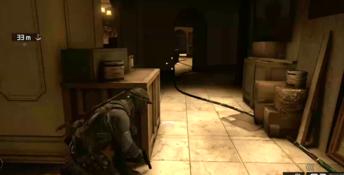
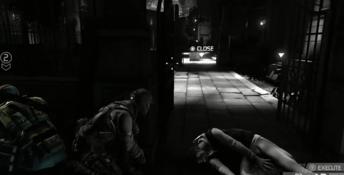
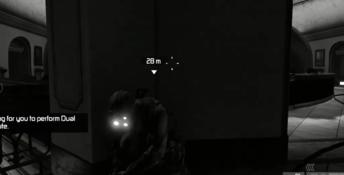
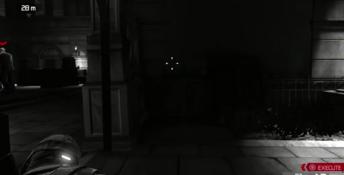
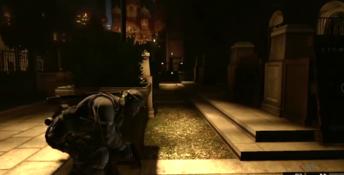
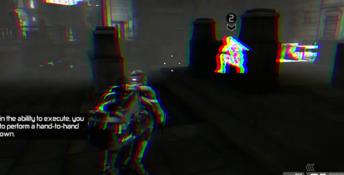


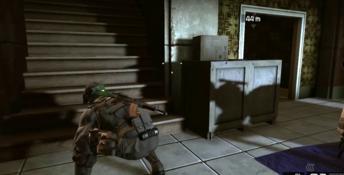
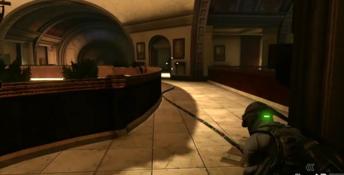
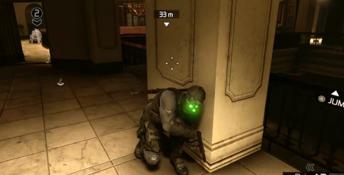
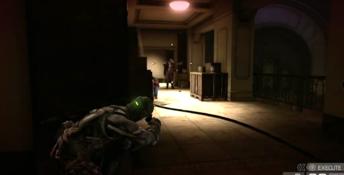

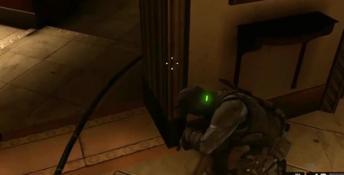
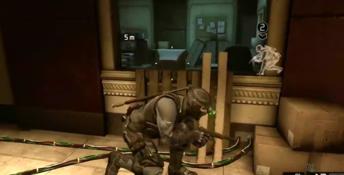
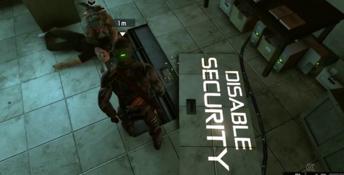




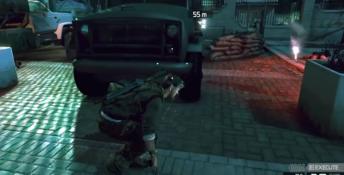
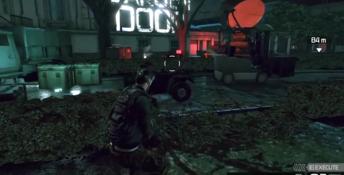






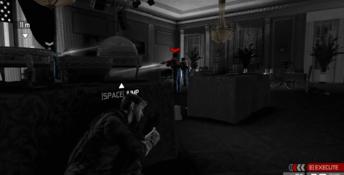



 Tom Clancy's The Division
Tom Clancy's The Division
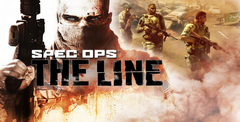 Spec Ops: The Line
Spec Ops: The Line
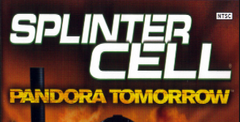 Tom Clancy's Splinter Cell: Pandora Tomorrow
Tom Clancy's Splinter Cell: Pandora Tomorrow
 Redline
Redline Sniper: Ghost Warrior 3
Sniper: Ghost Warrior 3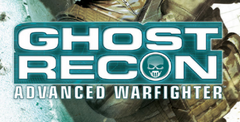 Tom Clancy's Ghost Recon: Advanced Warfighter
Tom Clancy's Ghost Recon: Advanced Warfighter
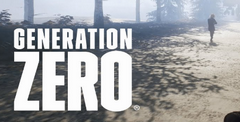 Generation Zero
Generation Zero